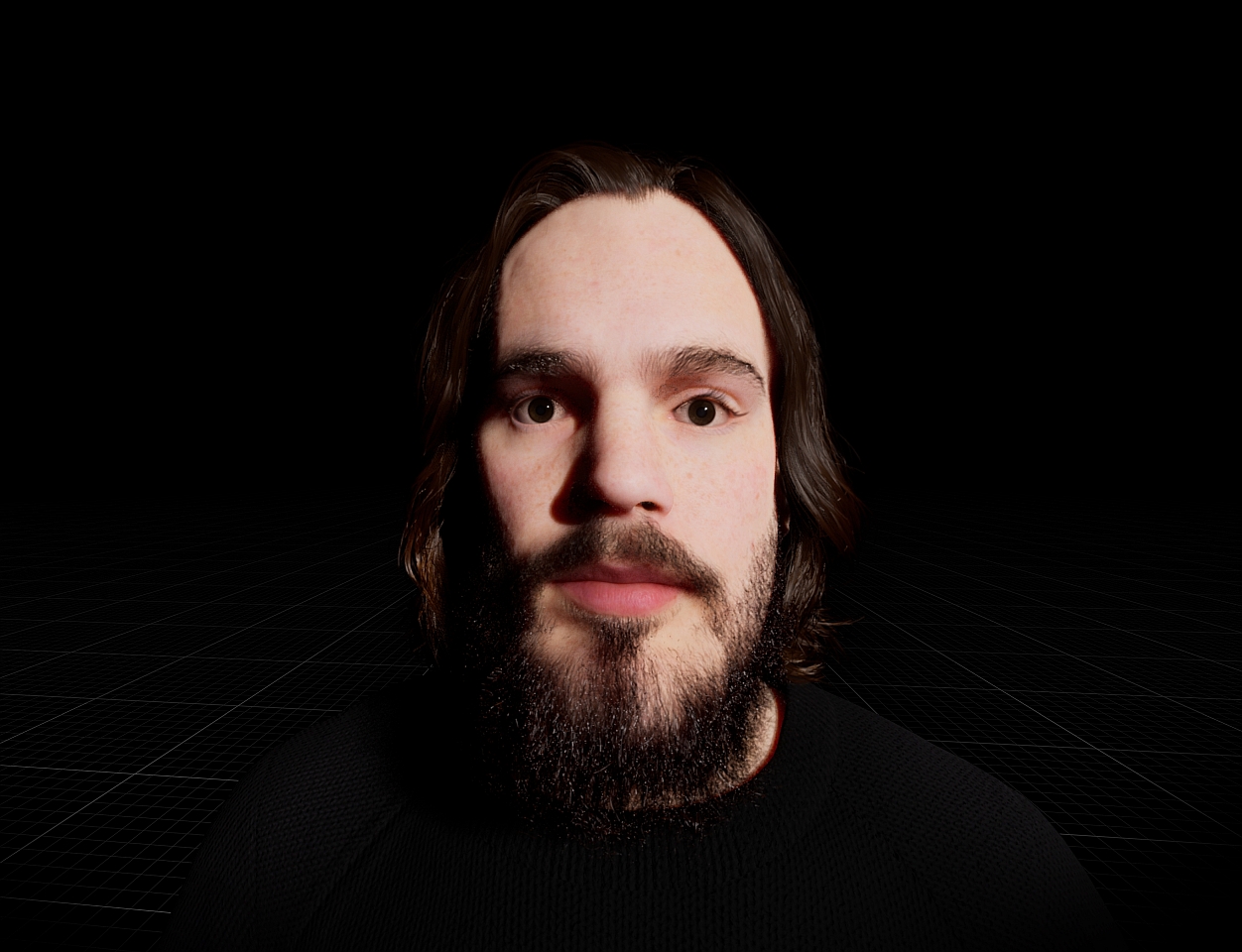PEKKO VASANTOLAFor Sale: Thoughts 10:26:02 - 17:12:34 28.10.2023 – 19.11.2023
 Self-portrait trained with thought data, 2023
Self-portrait trained with thought data, 2023Realtime generative animation
The exhibition delves into the themes of privacy, individuality, generalisations, and classification in the era of datafication. It is a speculation of the future inspired by neuroscience and techno-optimism, yet also a reflection on the nature of today’s data harvesting, measuring, and data use.
I recorded almost all my conscious thoughts over a period of seven hours. Pushing personal data collection to its limits, I transformed my stream of consciousness into a dataset. The works in the exhibition are based on this dataset, which can be seen on the ground floor of the gallery, cast into large plaster sculptures.
Upstairs, there are three sets of works that explore the potential uses of personal data. In the Thought Store, individual data points – in this case, my random thoughts – are up for auction to the highest bidder. This piece echoes the current global data market, where information derived from our behaviour is one of the world's most valuable commodities. The works Possibly detached, and Changes in the Electromagnetic Field of My Brain Thinking about Flies and Bad Artwork present data visualisations and personality analyses created from the dataset.
Representing data-based content generation is the work Self-portrait Trained with Thought Data. It is a real-time animation implemented using three AI models. I fine-tuned a large language model with my thought data: the program imitates my stream-of-consciousness, constantly and tirelessly producing new “thoughts”. The language model is essentially a mathematical equation calculating the probabilities between words. The work blends the general data mass of an American tech company with the most private and intimate data possible - my thoughts. At what point does the individual and unique transition to the universal and general? The boundary blurs and meanings merge when content is based on probability calculations imitating semantics.
Are our thoughts truly that individual? Can the probability ratios between words be successfully calculated precisely because our language and understanding of the world are based on generalisation and categorisation? To what extent can human experiences, characteristics, or factors, such as thoughts, be reduced to language or numbers? Or is that very categorisation the mechanism that enables us to understand our surroundings and each other?
Pekko Vasantola
The exhibition has been realised in cooperation with the Neuroimaging methods group (NIMEG) at Aalto University and with support from the Finnish Cultural Foundation
